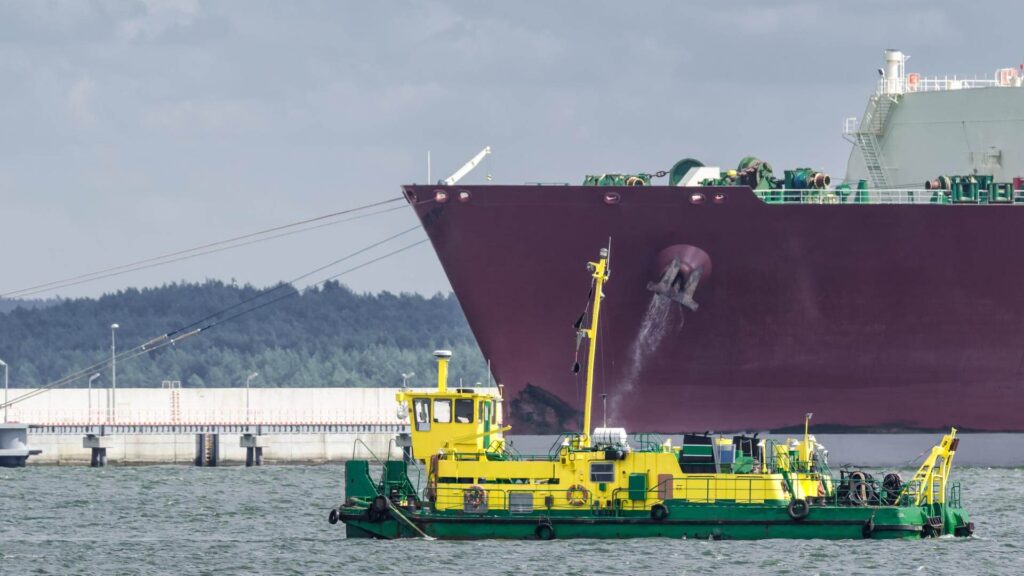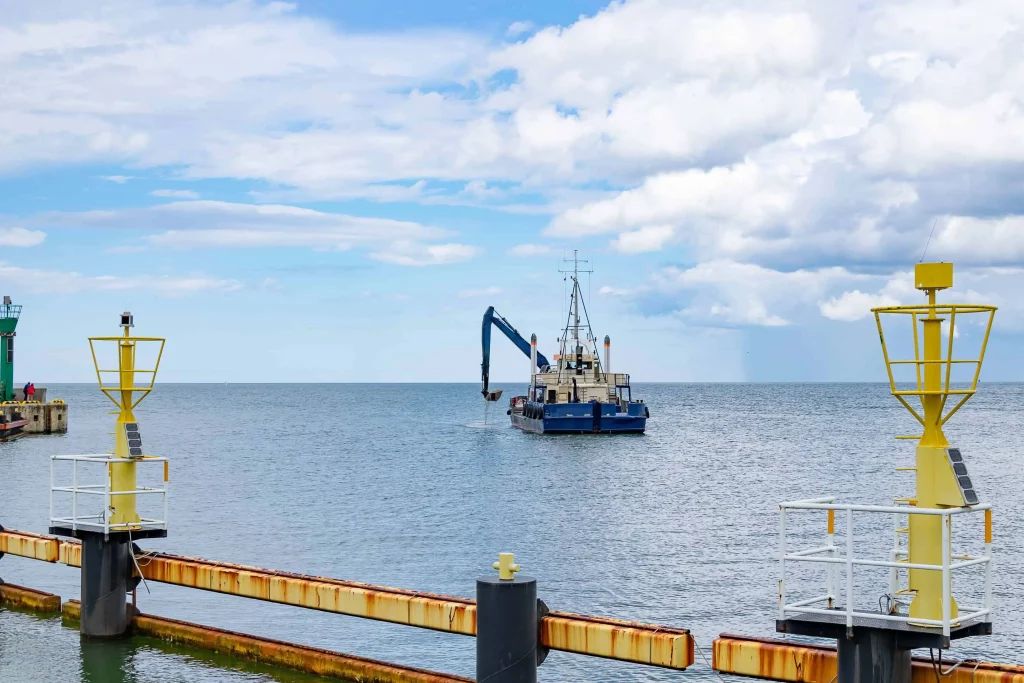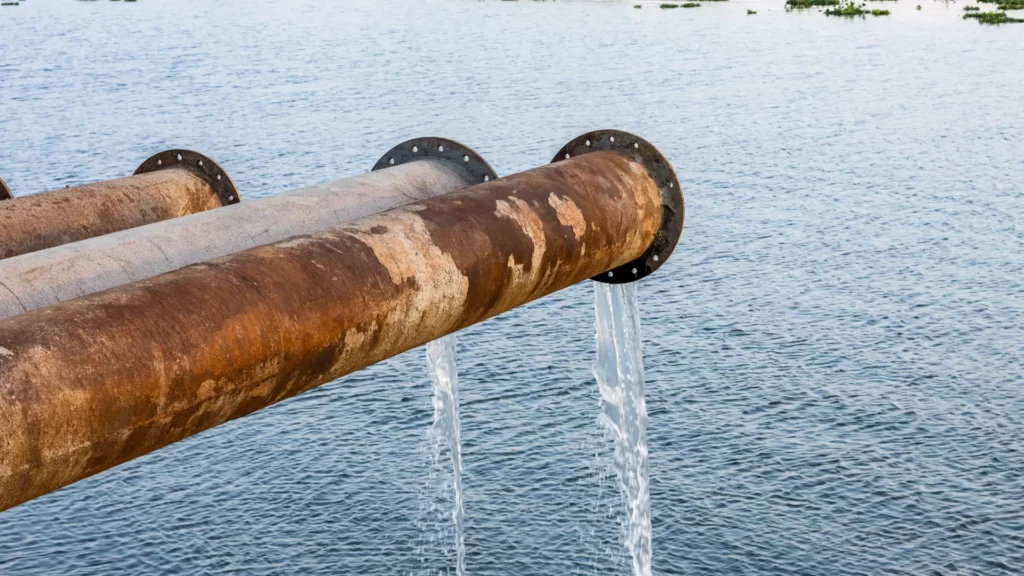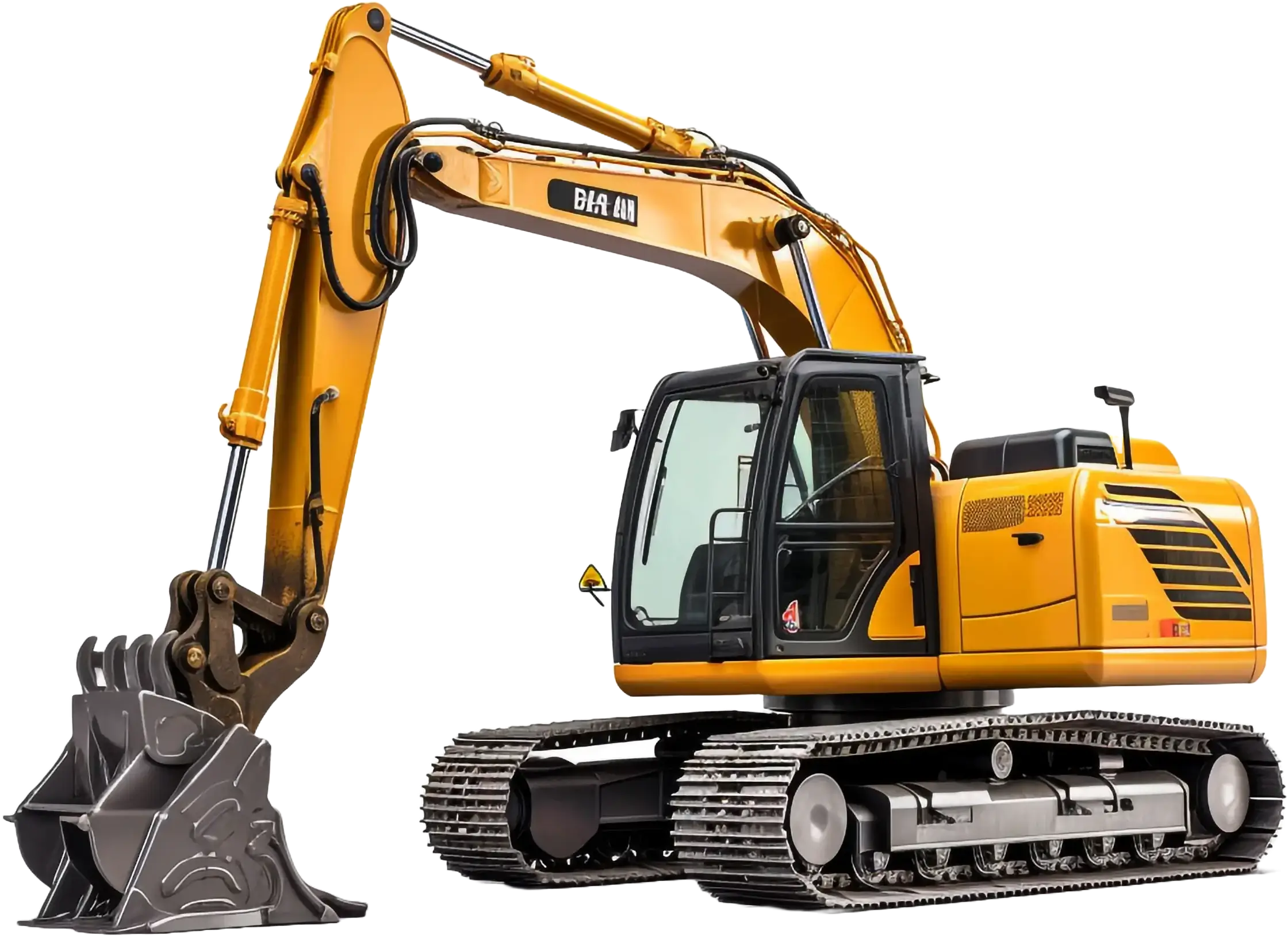Dredging companies play a pivotal role in driving coastal development and maintaining vital waterways. By removing sediment, reshaping coastlines, and ensuring navigable water depths, these companies contribute significantly to economic growth and ecological balance. Coastal areas and waterways are essential for global trade, tourism, and local economies, and dredging operations help preserve and enhance their functionality.
Dredging’s impact extends beyond navigation. It supports infrastructure projects like port expansions, flood prevention, and land reclamation. By effectively managing sediment, dredging operations help restore aquatic habitats, mitigate erosion, and improve water quality. This dual focus on ecological restoration and infrastructure development makes dredging companies indispensable in addressing modern challenges, such as rising sea levels and increased maritime activity.
Collaboration between dredging contractors and dredging consultants is critical to achieving sustainable outcomes. While contractors bring technical expertise and advanced equipment to execute projects efficiently, consultants provide valuable insights through feasibility studies, environmental assessments, and regulatory compliance planning. This synergy ensures that dredging projects align with both economic and environmental goals.
In summary, dredging companies serve as key drivers of progress in coastal and waterway management. Their work, in collaboration with skilled dredging contractors and knowledgeable consultants, ensures the sustainable development of vital marine and coastal infrastructure.
The Role of Dredging Companies

Dredging companies provide essential services that support both coastal development and waterway maintenance. Their expertise extends across a range of operations, including sediment removal, waterway deepening, coastal reclamation, and erosion control. By addressing these needs, they help preserve critical marine ecosystems while enabling economic growth and infrastructure development.
One of the primary roles of dredging companies is sediment removal and waterway deepening. These processes are vital for ensuring safe navigation in shipping lanes, harbors, and inland waterways. In addition, coastal reclamation projects rely heavily on these companies to create new land for urban, industrial, or agricultural use. Erosion control efforts further underscore their importance, as they help stabilize shorelines, protect coastal communities, and mitigate the effects of rising sea levels.
Dredging companies also play a crucial role in environmental restoration and maintenance dredging. By removing contaminated sediments, they restore aquatic habitats and improve water quality, fostering biodiversity and ecological balance. Maintenance dredging ensures that waterways remain functional, safe, and accessible over time.
Several key industries benefit from the expertise of dredging contractors and consultants. Ports and harbors depend on dredging to accommodate larger vessels and support global trade. Real estate and tourism sectors thrive through the creation and stabilization of beaches and waterfront properties. Additionally, marine infrastructure and energy sectors, including offshore wind farms and oil platforms, rely on dredging for site preparation and maintenance.
Dredging contractors and consultants collaborate to ensure that projects are technically sound and environmentally compliant. Together, they provide innovative, sustainable solutions that address the needs of diverse stakeholders. Dredging companies, with their advanced capabilities and versatile services, are indispensable to the development and maintenance of coastal and marine infrastructure.
Coastal Development Powered by Dredging
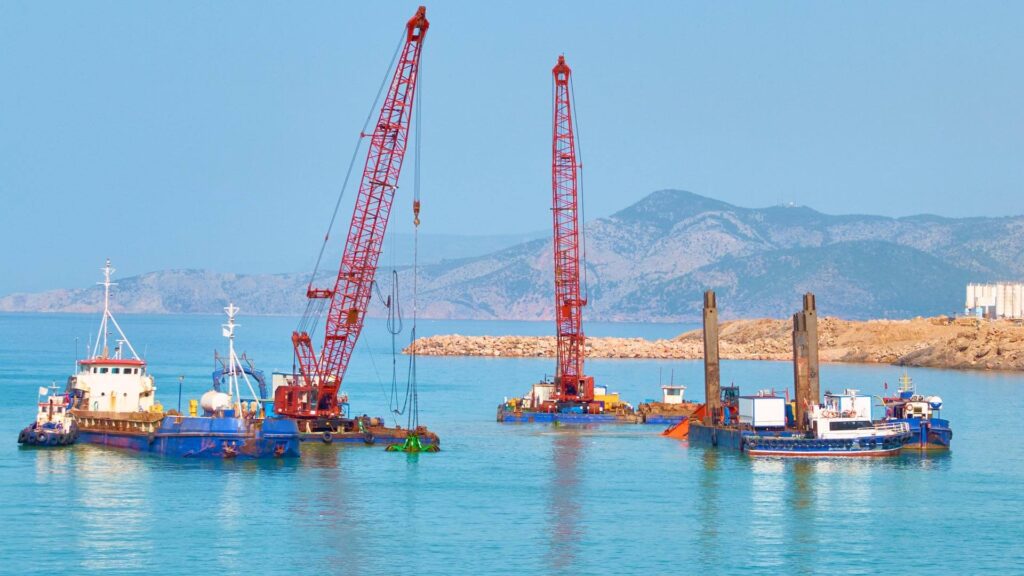
Dredging plays a pivotal role in coastal development, enabling land reclamation for urban and industrial expansion. By removing sediment and reshaping coastlines, dredging companies create new land for infrastructure, housing, and commercial purposes. These projects are essential for addressing the challenges posed by growing populations and limited coastal space.
Dredging contractors are instrumental in creating and stabilizing beaches that boost tourism and recreation. By replenishing sand and reinforcing shorelines, they ensure that beaches remain attractive and functional for both visitors and local communities. This process not only protects valuable real estate but also supports regional economies reliant on tourism.
Several successful coastal projects highlight the impact of dredging companies. For example, large-scale land reclamation initiatives, such as the construction of artificial islands or the expansion of ports, showcase their ability to transform landscapes and support economic growth. Beach restoration projects have also revitalized tourism-dependent areas, restoring natural beauty and recreational value.
Collaboration with a dredging consultant is vital to the success of these projects. Consultants assess environmental impacts, provide guidance on regulatory compliance, and help develop sustainable dredging strategies. By balancing development needs with ecological preservation, consultants ensure that projects align with long-term environmental goals.
In summary, dredging companies, working alongside skilled dredging contractors and consultants, drive coastal development by delivering innovative and sustainable solutions. Their expertise transforms coastlines while supporting both economic and environmental objectives.
Waterway Maintenance and Navigation
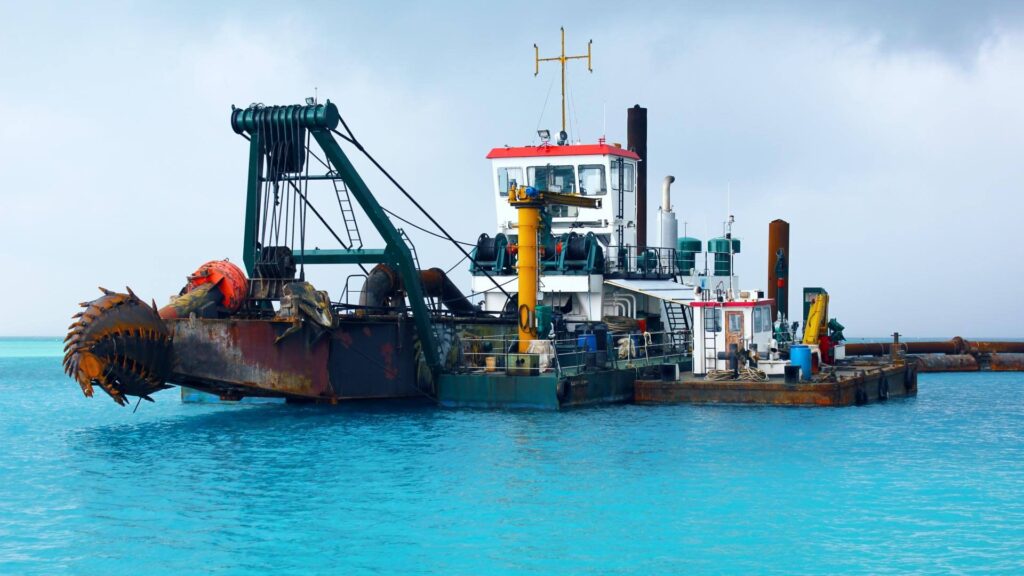
Maintaining shipping lanes, harbors, and inland waterways is crucial for global trade, economic development, and local transportation networks. Dredging companies play a central role in ensuring these waterways remain navigable and functional. By removing sediment build-up, they prevent obstructions that could impede maritime activities and reduce the risk of flooding in adjacent areas.
Dredging contractors are skilled in managing sediment removal with precision and efficiency. Using advanced equipment, such as hydraulic and mechanical dredgers, they address sediment accumulation in critical areas, ensuring safe navigation for vessels. Their expertise extends to handling challenging environments, making them essential for maintaining waterway infrastructure.
Dredging companies leverage cutting-edge technology to optimize maintenance dredging. GPS-guided dredgers and real-time monitoring systems enhance accuracy and efficiency, allowing contractors to target specific areas that require sediment removal. This reduces project timelines and minimizes environmental disruption while achieving desired outcomes.
Environmental considerations are a key focus in waterway maintenance. Dredging consultants collaborate closely with dredging companies to assess potential impacts and develop strategies that comply with environmental regulations. They conduct feasibility studies, monitor ecological changes, and recommend eco-friendly practices to minimize harm to aquatic ecosystems.
In summary, the combined efforts of dredging contractors, consultants, and companies ensure that waterways remain safe, efficient, and environmentally sustainable. Their work supports global commerce, local economies, and ecological balance, highlighting their indispensable role in waterway maintenance and navigation.
Environmental Considerations in Dredging
Environmental sustainability is a critical aspect of dredging operations. Regulations and compliance standards ensure that dredging activities align with ecological preservation goals. To mitigate potential environmental impacts, dredging companies must adhere to strict guidelines set by local, national, and international authorities. These standards govern sediment disposal, water quality, and the protection of marine habitats.
Dredging companies have adopted numerous eco-friendly practices to minimize their impact on aquatic ecosystems. These include using precision dredging techniques to target specific sediment areas, reducing unnecessary disruption to surrounding habitats. Additionally, modern equipment incorporates technologies like real-time monitoring to limit sediment resuspension and its effects on water quality.
Dredging consultants are vital to maintaining environmentally responsible practices. They conduct feasibility studies to identify potential risks and recommend strategies to address them. They also perform detailed environmental assessments, ensuring that projects comply with regulatory requirements while minimizing ecological disruption. Their expertise bridges the gap between operational efficiency and environmental sustainability.
Several environmentally sensitive dredging projects showcase the importance of balancing development with ecological preservation. Restoration initiatives for wetlands or coral reefs have successfully removed harmful sediments while fostering biodiversity.
The industry continues to advance sustainable methods by combining the expertise of dredging contractors, consultants, and companies. Through responsible practices and adherence to regulations, dredging companies ensure that their operations support economic development and environmental health, preserving aquatic ecosystems for future generations.
Technology and Innovation in Dredging
Technology has revolutionized the dredging industry, empowering dredging companies to deliver more efficient, precise, and sustainable solutions. Advances in dredging equipment, such as GPS-guided systems, enable operators to map and monitor underwater areas with pinpoint accuracy. This precision minimizes unnecessary sediment removal, reduces environmental impact, and ensures cost-effective operations.
Remote monitoring tools further enhance dredging projects by providing real-time data on equipment performance and sediment levels. These systems allow operators to adjust dredging activities dynamically, optimizing productivity and reducing downtime. Dredging companies utilize these innovations to streamline processes and achieve superior outcomes in both coastal development and waterway maintenance.
Automation and AI-powered tools have become integral to modern dredging practices. Automated dredgers equipped with machine learning capabilities can perform tasks with minimal human intervention, increasing safety and efficiency. These technologies enable dredging contractors to handle complex projects with greater reliability and accuracy, meeting tight deadlines while adhering to environmental standards.
Collaboration with a dredging consultant is crucial in leveraging data-driven insights for sustainable solutions. Consultants analyze real-time data and provide actionable recommendations to balance operational goals with ecological preservation. This partnership ensures that projects benefit from cutting-edge technology while maintaining regulatory compliance.
Through the integration of advanced technology and close collaboration between contractors, consultants, and companies, the dredging industry continues to innovate, driving progress in coastal and waterway management.
Challenges in the Dredging Industry
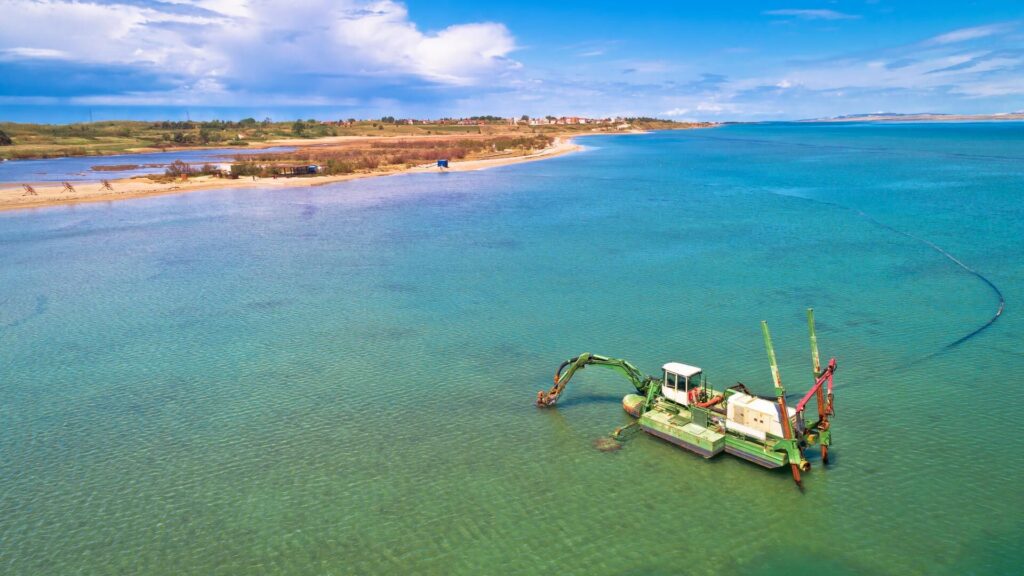
The dredging industry faces several challenges that require careful management and innovation. One of the most significant hurdles is navigating complex regulatory environments and permitting processes. Dredging companies must comply with stringent environmental regulations, which often involve extensive documentation, environmental assessments, and long approval timelines. This complexity can delay projects and increase costs.
Balancing project costs with environmental sustainability is another critical challenge. While stakeholders demand efficient and cost-effective operations, they also expect adherence to eco-friendly practices. Dredging companies must invest in advanced equipment and adopt sustainable methods to meet these expectations, often requiring significant upfront costs.
The industry also struggles with labor shortages and the need for skilled professionals. Experienced dredging contractors are essential for executing projects efficiently, while knowledgeable consultants play a key role in ensuring compliance and sustainability. The limited availability of these skilled workers can impact companies’ capacity to manage multiple large-scale projects simultaneously.
Collaboration among dredging companies, contractors, and consultants is essential to addressing these challenges. By leveraging expertise, technology, and innovative practices, the industry can navigate regulatory complexities, optimize costs, and maintain a skilled workforce to ensure the continued success of dredging operations.
How to Choose the Right Dredging Company
Selecting the right dredging company is crucial for the success of coastal and waterway projects. Several factors should be evaluated to ensure the chosen company aligns with project requirements and delivers sustainable results.
Experience and a strong portfolio of completed projects are key indicators of a company’s reliability. Dredging companies with a proven track record demonstrate their ability to handle diverse challenges and deliver results that meet client expectations. Reviewing past projects provides insights into their expertise in specific areas, such as land reclamation, navigation channel maintenance, or environmental restoration.
Another essential factor is access to advanced equipment and technology. Companies equipped with state-of-the-art tools, such as GPS-guided dredgers and real-time monitoring systems, can execute projects more efficiently and precisely, minimizing costs and environmental disruption.
Collaboration with a dredging consultant ensures tailored solutions that address unique project challenges. Consultants provide critical insights through feasibility studies and environmental assessments, helping companies adhere to regulations and achieve sustainable outcomes.
Finally, it is important to select a company that prioritizes sustainability and regulatory compliance. Dredging companies committed to eco-friendly practices and adhering to strict environmental standards not only ensure project success but also protect natural ecosystems for the long term.
The Future of Dredging and Coastal Development
Dredging companies’ futures are being shaped by trends emphasizing sustainability and green dredging practices. As environmental concerns grow, companies are adopting eco-friendly methods to minimize their impact on aquatic ecosystems while delivering effective sediment removal and coastal development solutions.
Dredging contractors and consultants will play a vital role in addressing climate change impacts, such as rising sea levels and coastal erosion. Their expertise will be essential for designing and implementing projects that protect vulnerable communities while preserving natural habitats.
Innovations, including automation, AI-driven dredging systems, and advanced sediment monitoring tools, will define the next generation of operations. Dredging companies leveraging these technologies will not only improve efficiency but also lead the way in sustainable coastal development practices.
Conclusion
Dredging companies play an indispensable role in shaping coastal development and maintaining critical waterways. Their expertise ensures safe navigation, supports economic growth, and addresses environmental challenges like erosion and sedimentation. Collaborating with skilled dredging contractors and knowledgeable consultants is essential for achieving effective and sustainable project outcomes. A dredging consultant provides valuable insights into regulatory compliance and eco-friendly practices, while contractors bring the technical expertise to execute projects efficiently.
Stakeholders should leverage the expertise of dredging companies to meet their development goals while prioritizing environmental stewardship. This will contribute to sustainable progress that benefits communities and ecosystems in the long term.

